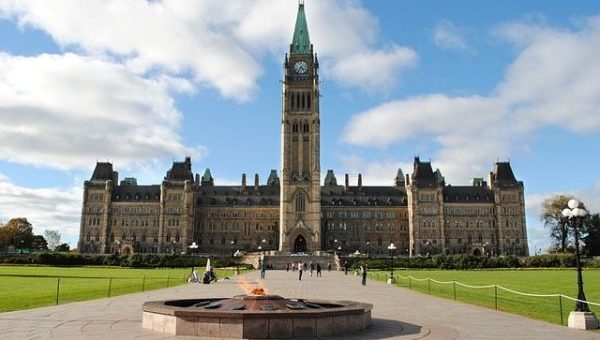 As there’s a spectrum in politics, so too is there one in moronics.
As there’s a spectrum in politics, so too is there one in moronics.
Moronics is, of course, the parallel dimension of politics – except that on the moronics spectrum, position is not measured by degrees of left or right perspectives but rather from thinking that ranges from benignly foolish to flabbergastingly stupid.
Politicians and bureaucracy can be placed on the moronics spectrum. Sometimes both occupy identical spots.
It was near to the spectrum’s latter end of egregiously wacky and ill-advised that a blessedly short-lived initiative in Ottawa was squelched recently.
But while it was alive, it showed the federal bureaucracy’s capacity for being tone-deaf – that wonderful Internet-age term that so aptly describes the capacity to do or propose something completely at odds with prevailing sentiment.
Here’s the deal: the federal Public Services Department recently proposed ‘greening’ the Centennial Flame by considering other means of illumination. The flame on Parliament Hill was ignited and used natural gas produced in the West in 1967 by then-Prime Minister Lester Pearson to celebrate 100 years of Canada as a federation.
Its key purpose was as a symbol of unity. It’s mind-boggling to consider how many thousands of Canadians and visitors have stood before its dancing flames and provincial and territorial plaques pondering the forces that hold together this great country.
Somehow, the idea of an Centennial LED doesn’t convey the same essence of togetherness and hands-across-the-country unity.
So at a time when energy narratives are cleaving the nation instead of binding it, the proposal smacked of thinking that could only exist conceptually in some alternative universe.
The greening concept proposal was immediately flagged for what it in reality reflected: a symbol of potential divisiveness.
Predictably, the criticism came fast and furious. And the department just as quickly announced it was abandoning the study.
All well and good.
But the thinking that birthed the greening notion must be rooted with the larger context of how a confederation deals with complex and thorny issues like energy mix and energy systems evolution. In that context, the gas fuelling the flame is symbolic as an important bridge energy source between Canada’s 150th and 200th birthdays. It’s also symbolic of a resource staple that has created so much wealth for Canada’s first 150 years and has the potential to do so for the next 150.
So to diminish its importance even with a notional nod to a cleaner and greener future is shortsighted, since natural gas combustion is one of the firmer sightlines to that very future.
For the conspiracy theory set, it may be that this initiative was a deliberate effort by the bureaucracy to embarrass the government of Prime Minister Justin Trudeau at a time when it’s struggling to balance competing national energy interests as the country is more polarized (and paralyzed) than ever.
Voters should become more familiar with the moronics spectrum. It threatens to escape through a gap in the space-time continuum and switch places with its political counterpart.
Many would argue it already has.
Bill Whitelaw is president and CEO at JuneWarren-Nickle’s Energy Group.
The views, opinions and positions expressed by columnists and contributors are the author’s alone. They do not inherently or expressly reflect the views, opinions and/or positions of our publication.


